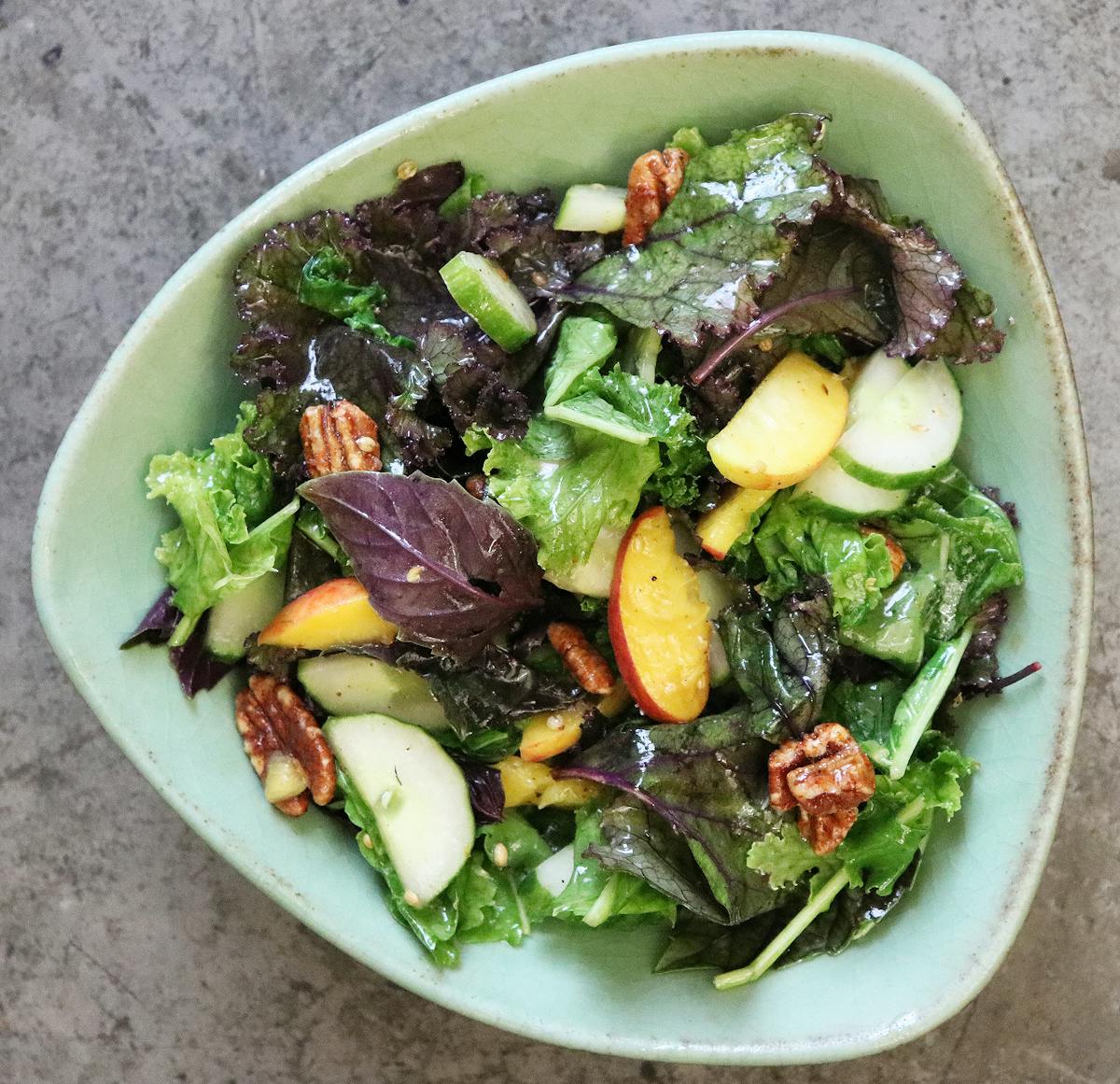Texas Summer Kale Salad

Photo: Ajna Jai / Contributor
The virtues of kale are extensive. It is one of the most nutritionally dense plants and is packed with loads of antioxidants. One cup provides more than the daily recommended dose of vitamins A, C and K. Many important nutrients including calcium, potassium and magnesium, along with phytonutrients that deter macular degeneration, are abundant in kale. It is very low in calories with a tiny bit of fat — essential omega-3 fatty acids. In short, kale is king.
Though I seldom saw kale in India, it originated in the eastern Mediterranean and other parts of Asia and has been cultivated as food for over two millennia. Even today, when in season, the Greeks will use it in daily cooking for stews or salads. The popular Spanish-Greek dish Spanakoriza made with spinach, lemon, dill and rice, often includes kale. It was introduced to European countries in the 13th century, and during World War II, England encouraged kale cultivation for its victory gardens. However, it was not until the 19th century that Russian traders brought kale to Canada and eventually the United States. First used as decorative hedges in gardens, it did not gain popularity until the ’90s as a health food.
My favorite way to eat it is either chopped and dropped into dal, a lentil stew, at the end of cooking, or marinated for a couple of hours in a salad. Marination softens the hard, grassy bite of the leaves, and fragrant herbs such as basil add a delicate touch. Crumbled cheese on top makes a nice addition also.

